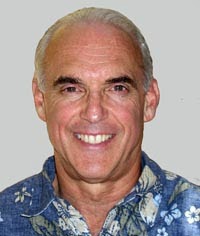 |
| The New Sherriffs of Wall Street |
In May, 2010, Time Magazine identified the “New Sheriffs of Wall
Street” as three women whose jobs were to then clean up the Wall Street mess
that was referred to as the “Great Recession”.
Included were Sheila Bair, the chair of the Federal
Deposit Insurance Corporation (FDIC) and one of the first federal regulators to
publicly sound the alarm about the collapse a few years earlier; Securities and
Exchange Commission (SEC) chair Mary Schapiro, the first woman to hold that
post and the deciding vote to initiate the agency's lawsuit against Goldman
Sachs; and Elizabeth Warren, chair of the panel monitoring the Troubled Asset
Relief Program (TARP) bank bailout and the chief advocate for new
consumer-finance regulations that banks and their allies have fought furiously
to oppose. These women may not have run
Wall Street, but in this new era, they were getting Wall Street to clean up its
act.
To quote the
Time article:
“A few weeks back, at an event to celebrate the role of women in
finance, Treasury Secretary Timothy Geithner tried to get things started with a
joke. He said he had recently come across a headline that asked, "What If
Women Ran Wall Street?"
“Now that's an excellent question, but it's kind of a low
bar," Geithner continued, deadpan amid rising laughter. "How, you
might ask, could women not have done
better?"
It is rarely noted that the financial wreckage littering our
world is the creation, almost exclusively, of men, not women. And no wonder: to
this day, each of the large banks, from Citigroup to Goldman Sachs, employs
fewer than a handful of women in senior positions, and only 3% of Fortune 500* companies have a woman as
CEO. Embarrassing tales of a testosterone-filled trading culture tumbled out of
the what-went-wrong probes as the Great Recession took hold“.
* Update: According to
Catalyst.Org, January, 2014, women currently hold 4.6 percent of Fortune
500 CEO positions and 4.6 percent of Fortune 1000 CEO positions.
Soon you will be able to visit one of the
former “New Sheriffs of
Wall Street”, Shelia Bair, and find out where she is now. At another time, we will catch up with Mary
Schapiro and Elizabeth Warren.
First serving under President Bush and later President Obama,
Shelia Bair was the
Chairman of the
Federal Deposit Insurance Corporation during one of the nation’s most turbulent
economic eras in history, from 2006-2011. After the 2008 collapse and
upheaval of U.S. and global markets as well as venerable financial
institutions, Chairman Bair worked to bolster public confidence and financial
system stability that resulted in no runs on bank deposits. The FDIC did not
turn to taxpayer borrowing to manage its losses and liquidity needs, instead
funding them through its traditional means of assessing banks for the cost of
insuring their deposits. The FDIC’s resolution practice of selling failing
banks to healthier institutions, while providing credit support of future
losses from failed banks’ troubled loans, saved the FDIC’s Deposit Insurance
Fund, tens of billions of dollars over losses it would have incurred if the
FDIC had liquidated those banks.
Her efforts established her as an ardent advocate and innovator
of policies to end the doctrine of too-big-to-fail and taxpayer bailouts.
A working mother and lawyer hailing from Kansas, Bair’s
illustrious Curriculum Vitae reads like a Who’s Who in public life: among her positions were counsel to Senator
Bob Dole in his Washington office; Assistant Secretary of the Treasury for
Financial Markets;
and executive level positions at the Government Relations of the New York Stock
Exchange; The Commodity Futures Trading Commission and in academia - the Dean’s
Professor of Financial Regulatory Policy at UM Amherst.
 |
Shelia Bair, former Chairperson of the U.S. FDIC.
with Ben Bernanke & Hank Paulson |
When Bair’s term at the FDIC was over she left in 2011, first
serving as an adviser to the nonprofit Pew Charitable Trusts, then leading a new private sector group
called the Systemic Risk Council whose mission will be to encourage
reform. Here in the U.S., the
Dodd-Frank law was designed, in part, to eliminate systemic risk - that is, the
idea that the failure of one institution could be big enough to bring down an
entire economy. Implementing financial reform has taken longer than expected,
though, and that has many watchdogs increasingly on edge.
Traditionally issues are raised as one moves from regulator to
regulated.
In order to avoid conflicts, Ms. Bair has decided not to work
for a financial services firm in the United States.
Earlier this year, Bair joined the board of Spanish bank Santander, one of the largest banks in Europe with vast
operations in the U.S., having amassed a number of banks in the wake of the
financial crisis.
“I hope that my service on the Santander board will provide yet
another avenue for continuing my commitment to reforming the global financial
system and contributing to a safer, more responsible, and customer oriented
banking system,” Bair said in a statement.
At Santander, Bair, as an independent director, will help advise
on the running of a bank whose asset base is as big as the Spanish economy and
with the biggest market value of any lender in the euro zone.
Tim Geithner isn't alone in asking the
question, What if women, not men, were the real powers on Wall Street? With the
successful tenures of Bair, Schapiro and Warren, we are finally getting an
answer. They were fabulous!
For more information about Wall Street and New York's Financial District,
join a Wall Street Walks guided walking tour!





